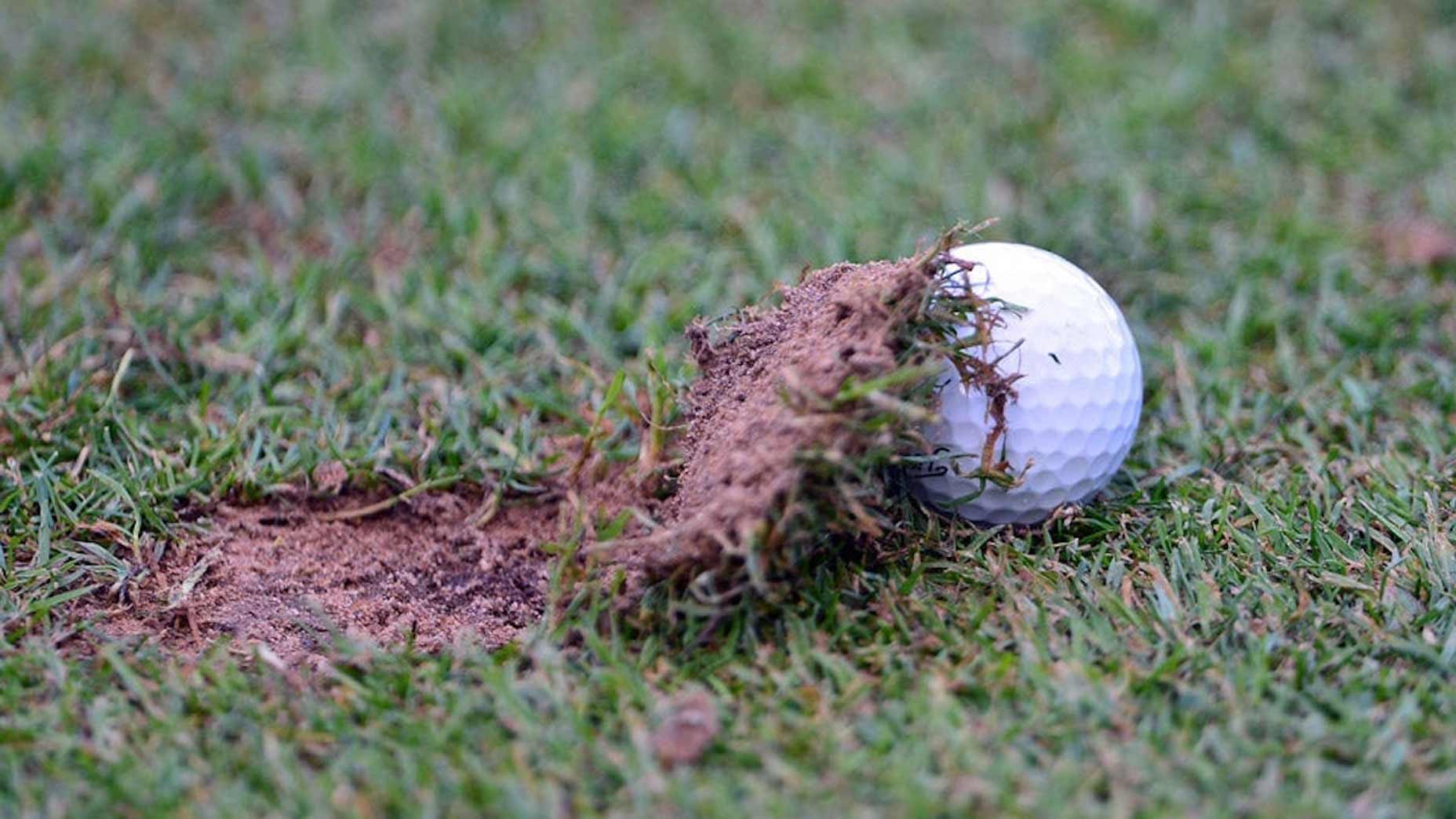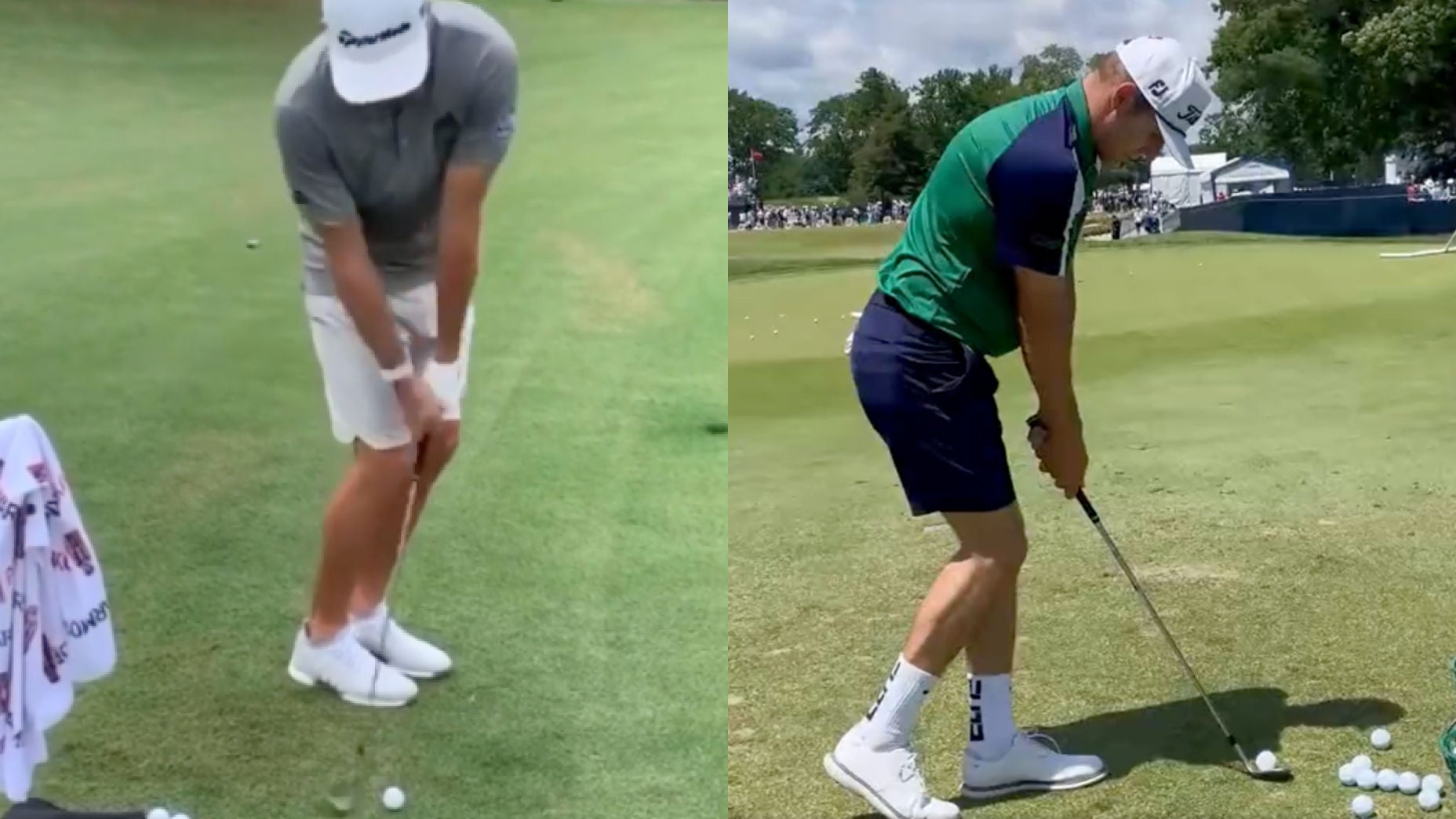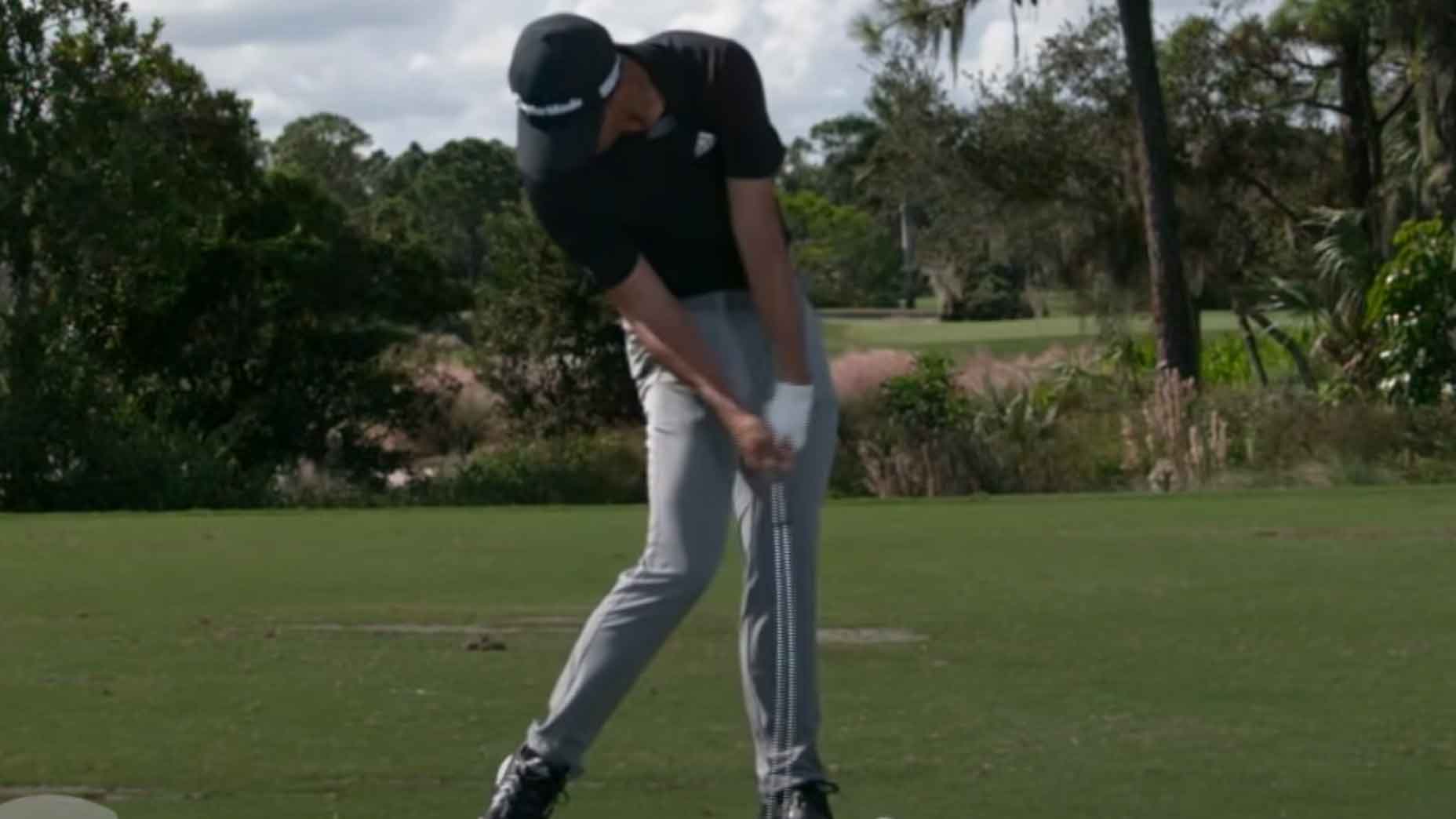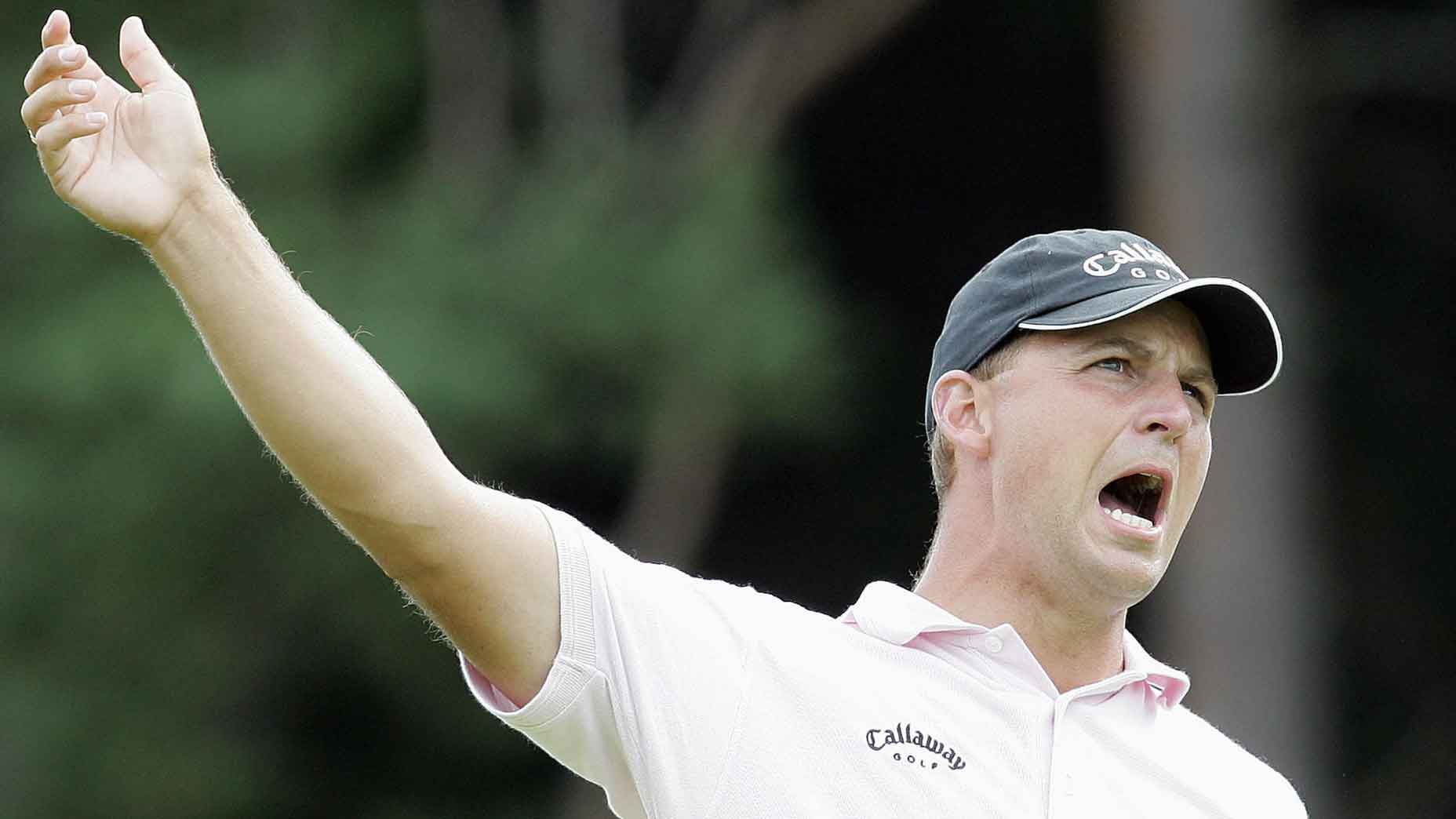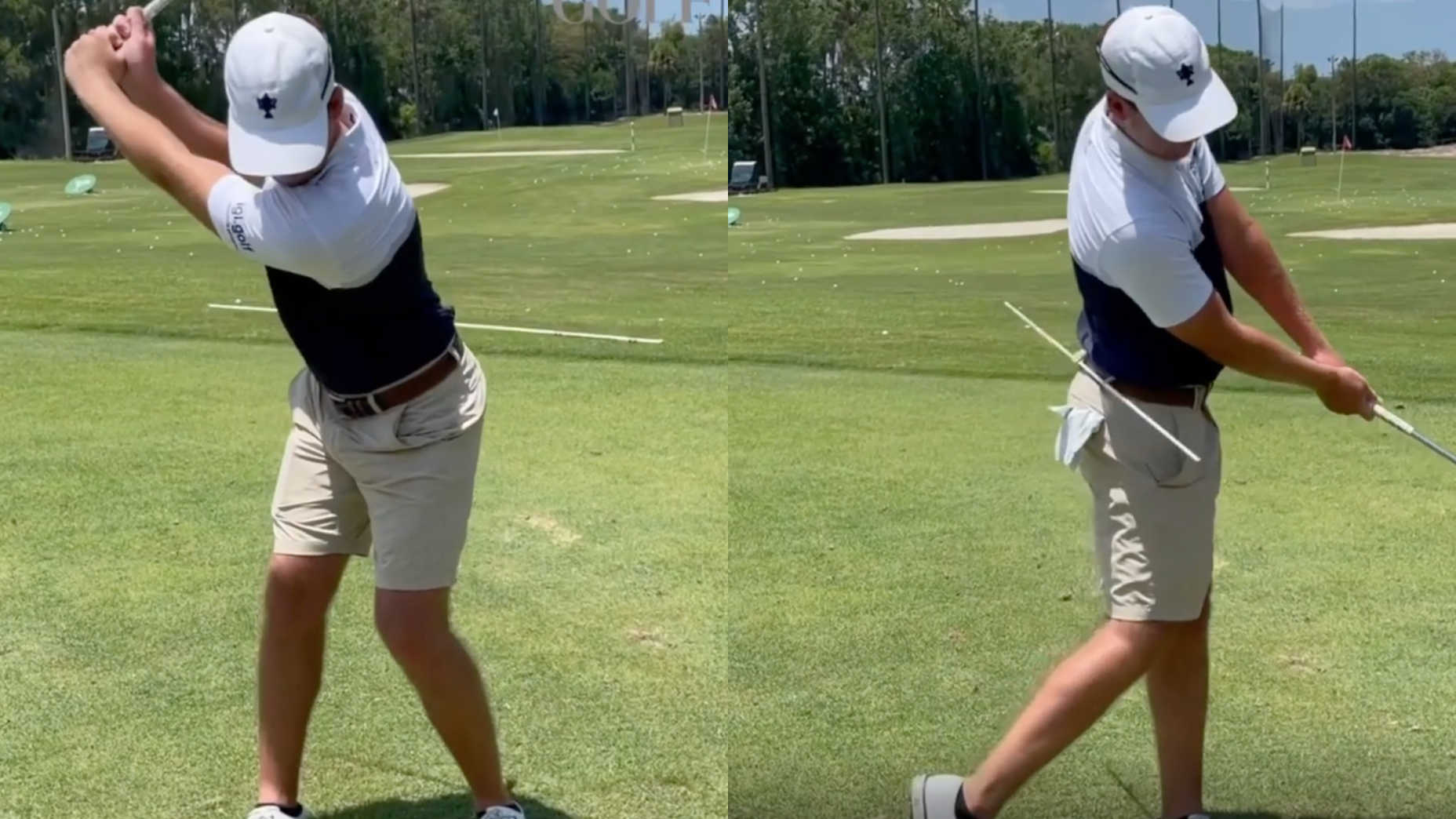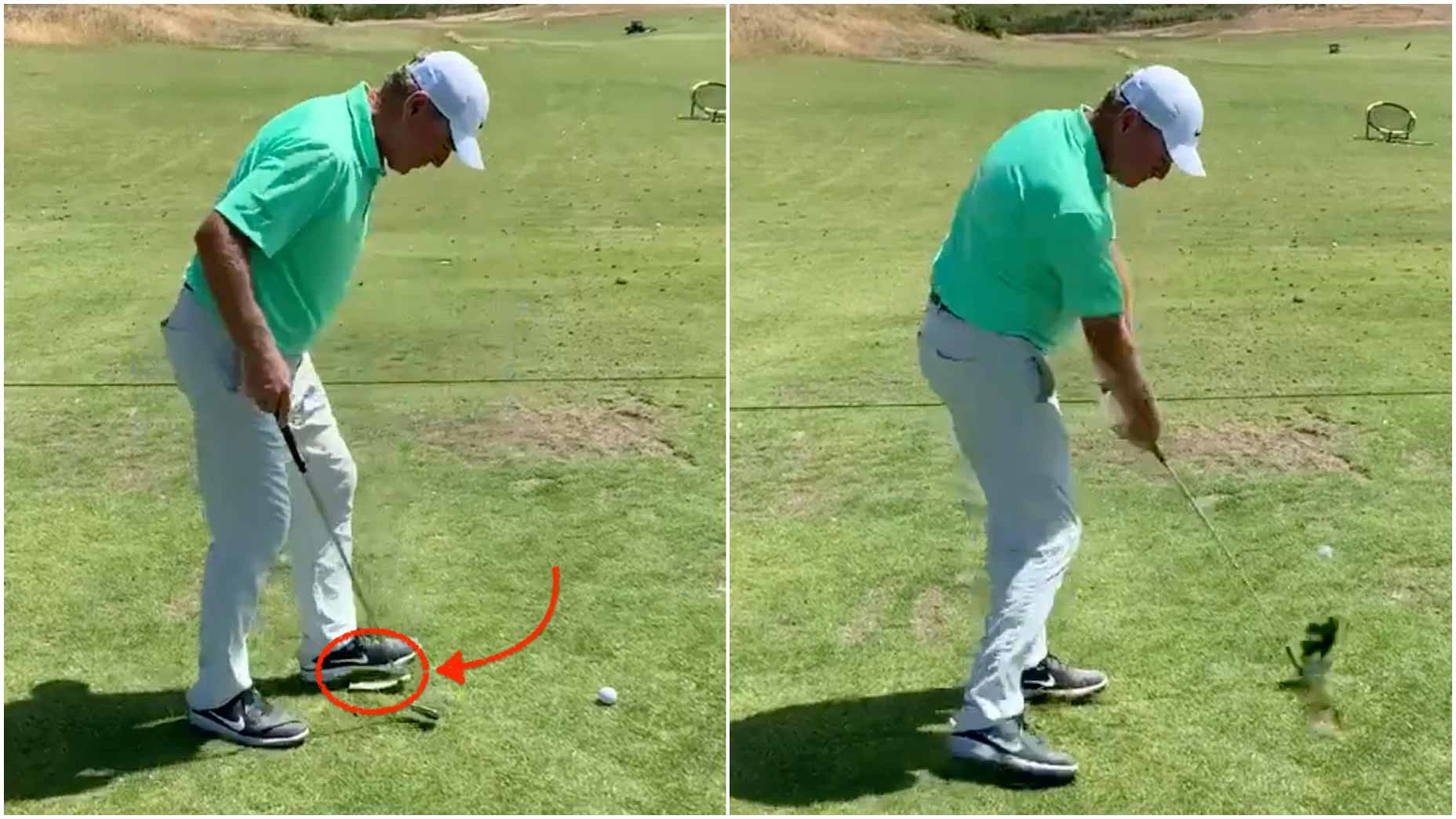You envision a beautiful golf shot flying down the fairway. You make your best effort and then it happens … the club gets stuck in the ground and the ball travels almost nowhere.
This has certainly happened to all of us. While it can be frustrating, often times digging your club down into the ground as an attempt to get the ball into the air can be a promising step in the right direction.
Here are the top 10 fundamentals you can check to turn that ugly chunk into a beautiful shot …
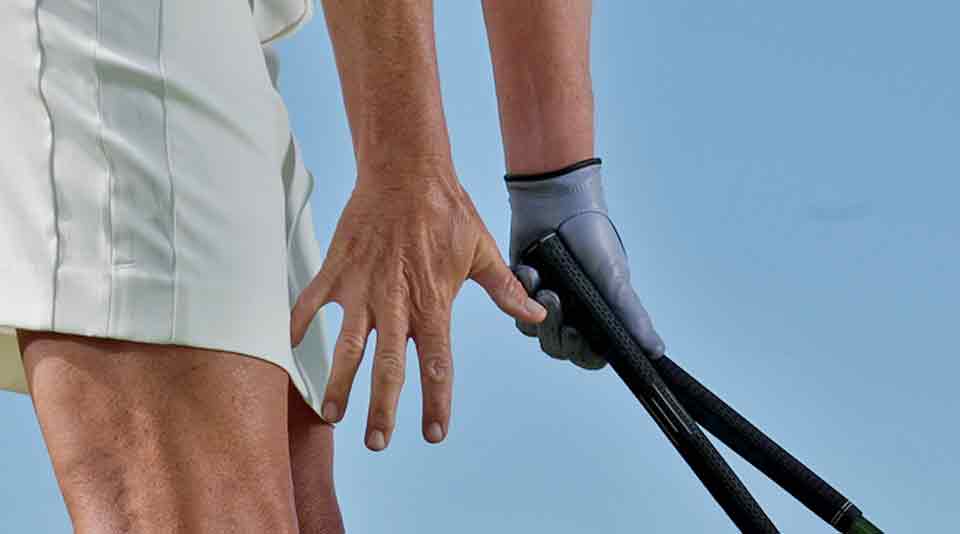
1. Crowded posture
Proper posture is one of the most important fundamentals to good contact. Giving yourself enough room to bow from your hips so that your hands can hang below your shoulders puts you into a balanced position that allows you to be athletic throughout your swing.
If you crowd your club and stand so close that your arms do not have enough room to hang and swing can often result in your golf club getting stuck into the ground. Being too crowded, effectively makes the club too long relative to your body, so it has nowhere to go but into the ground.
Give yourself enough room to bow from your hips and get into a setup that allows you to be in balance throughout and at the finish of your golf swing.
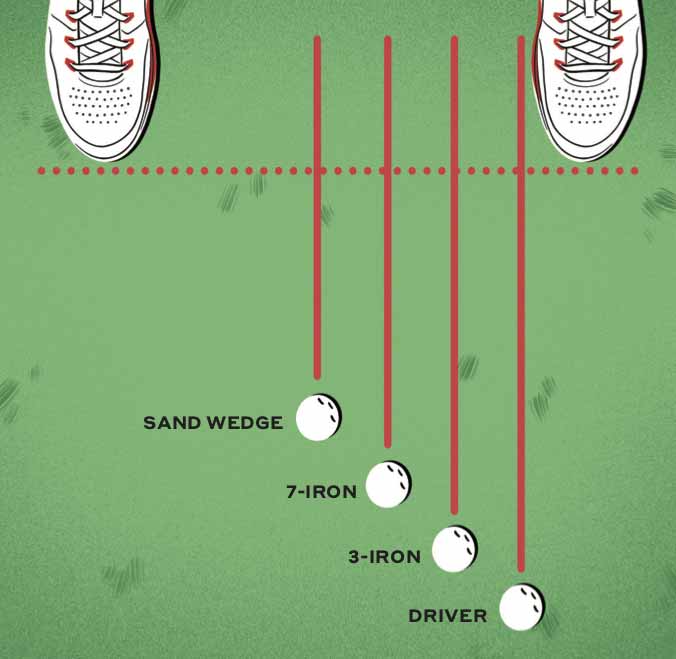
2. Ball position too forward
Ball position is one of the most important fundamentals. All it takes is playing your golf ball a fraction of an inch too far forward for you to chunk the ball. I often say to my students: “you hit the ground where the golf ball should have been.”
You can easily check this by taking a practice swing and seeing where, relative to your feet, your club hits the ground. If your club hits the ground centered in your stance, it would be greatly to your advantage to place your golf ball there.

3. Flat footed forward swing
When you make a full swing, most of us pivot off of our back foot as our weight naturally moves athletically toward the target (the amount you do this may vary based on flexibility and limitations). If when you swing you leave the heel down on the ground, the bottom of the swing often occurs before the golf ball, producing the dreaded fat shot. You should allow this trailing heel to come up and when you do — it will move the bottom of your swing correctly under and after your golf ball.
I like to have my students hold their finish and check to see that their heel is up and that they are in balance.
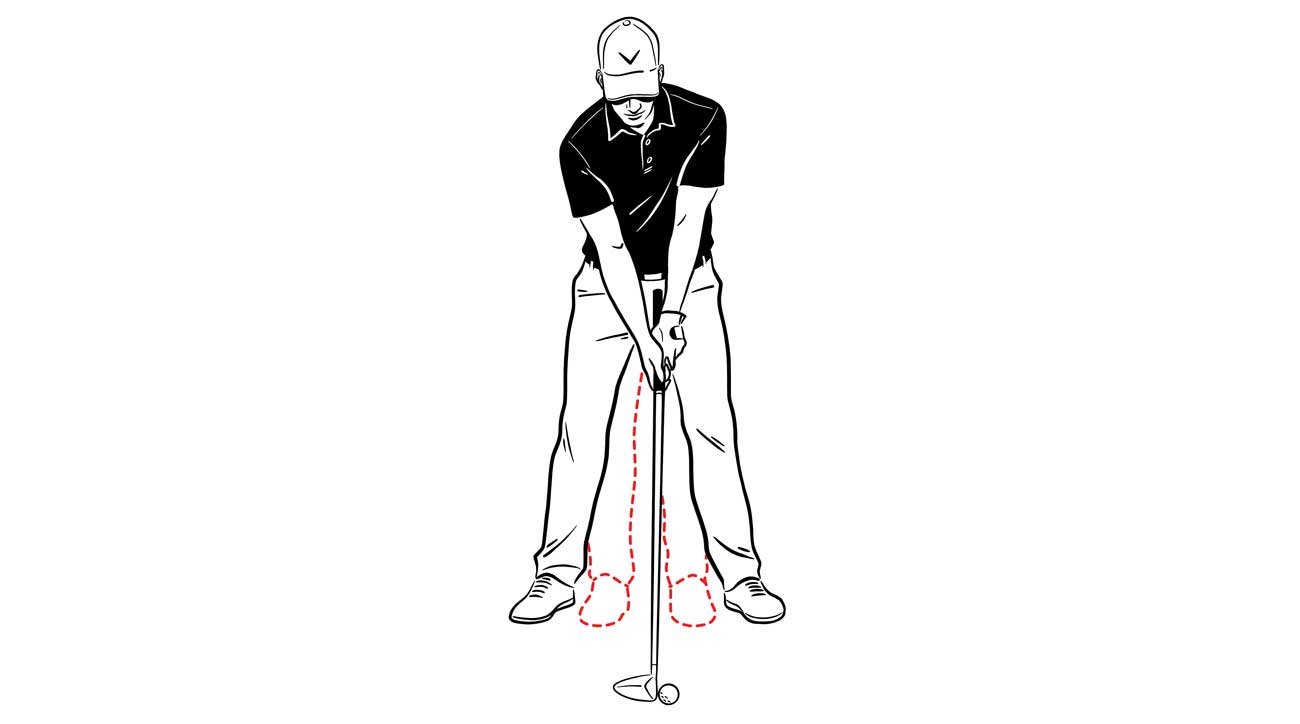
4. Stance too wide
Ideally, for a ball on the ground your stance should be approximately hip width, give or take a little.
If you stance is significantly wider, it can often cause your hips to move too much side to side and your hip seeks being over each foot. As your hips move too much side to side, this can often cause the club to hit the ground before the ball if you do not recenter yourself exactly the same amount.
Also, when you stance is too wide, the potential locations the club has to hit the ground increases, which results in more inconsistent strikes. Here’s how to find your perfect stance width.

5. Club not sitting properly
When you set your golf club on the ground behind your golf ball, it is important that you set it properly. This can often look odd to golfers when it is correct, in particular for the more lofted clubs in your golf bag. The aiming line on a golf club is the leading edge and the more lofted the club the more crooked the top line may look.
Often golfers will not set the club properly on the ground as a compensation — they hit slices, for instance, so they set the club closed at setup. Other times, it may be because their clubs are poorly fit.
The reason this is important is because the more twisted the clubface is at address, the more likely one side would dig into the ground at impact.

6. Getting Too Steep
You will often get out of your forward swing what you put into your backswing. If your backswing is a straight line back that tends to go toward the sky and is just a lifted motion, all you will have is straight down, which tends to get stuck. It reminds me of the letter V. Straight back and up equals straight down and dig.
It is important to understand that your backswing is circular in nature and will help to avoid this sharp digging motion.
One of the most efficient ways that I have seen to achieve this is to keep your underarms relatively close to your body as you make your backswing. This will help your upper body to rotate as it faces away from your target, creating a more shallow swing that will make it so much easier to brush the grass.
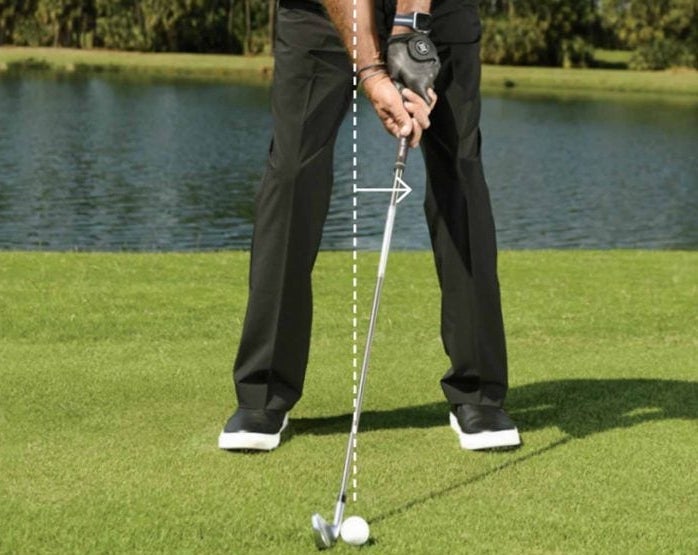
7. Excessive shaft lean
If when you set up you have an extreme forward press or shaft lean, this can easily take the club off of its bottom and have only the sharp corner of the leading edge contacting the ground, causing it to dig and get stuck. This isn’t to say that a lot of great golfers have a bit of this, but too much at address or during your swing can certainly make the club tend to get stuck when it interacts with the turf.
One of my favorite ways to minimize this is to hit golf balls from a low tee with your feet together. It is much more intuitive to keep your club more neutral, or straight up and down where the handle is in line with the head with your feet together. Pushing the handle forward would tend to throw your balance off with your feet together and that is why you are less likely to want to do this.
8. Deceleration on the downswing
Once your setup is good, speed and momentum are your friend. I often add speed to good swings with my students. I tell them when I am adding speed and momentum that is a vote of confidence that they are doing really well.
When you make your forward swing, you want to be athletic and just let it go and keep going. This often also helps to pull the trailing heel off of the ground. This athletic momentum, where the clubs stays in motion, can also keep the club from slowing down where it may get stuck.
One of my favorite drills for this, I learned from Mike Adams when I worked with him, was a continuous three-swing practice drill. From your setup, you take three swings back and through without stopping at all. This building momentum helps keep the club in motion and avoids gravity having too much of an influence that can make the club drop to the ground and get stuck.
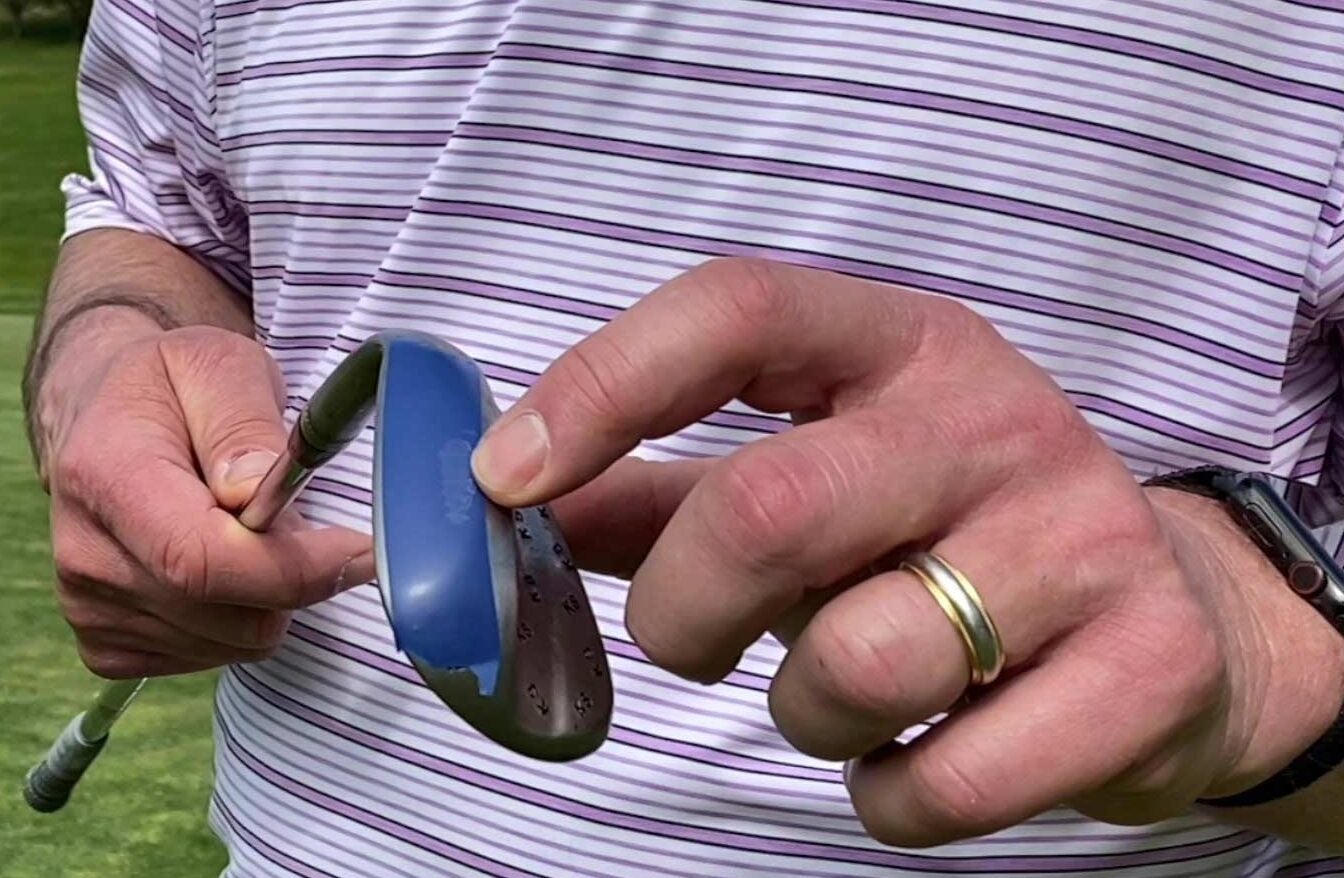
9. Not using the club’s bounce
When it comes to your short game you want to build in what I call “insurance” that the club will not dig and get stuck when it hits the ground.
When it comes to pitching with one of your wedges, it is extremely important that you learn to set the club properly on the bottom where the rounded bounce rests on the ground, rather than the leading edge and that you avoid leaning the shaft forward of the head. The handle of the club should be in line with the head of the club and not over the golf ball. That way, the bounce of the club will be engaged and you’ll have that insurance policy for those less-than-perfect shots.
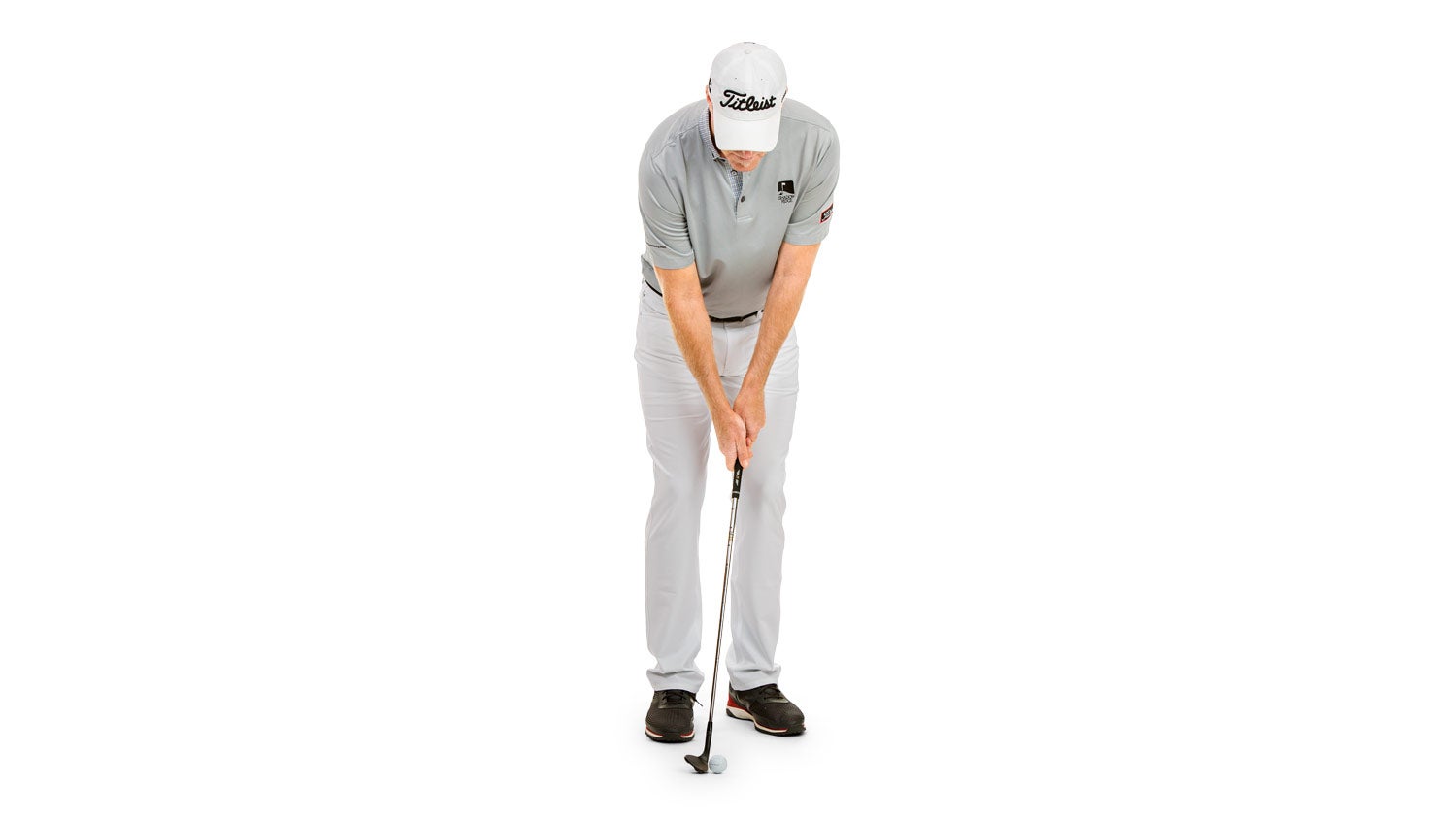
10. Incorrect body shape on short shots
Another insurance policy you can take out against chunked shots is to keep your sternum and head target side of the golf ball. By getting into good posture and placing your upper body and club shaft evenly forward of your ball, this will produce a bottom of your arc that happens after your golf ball. The club may make a bit of a digging feel into the ground but the ball will already be gone. This allows you to use lower-lofted clubs, producing more roll and distance. Even though they have a sharper leading edge, it will contact the ground after the ball producing a crisp, low and running chip or bump and run.
